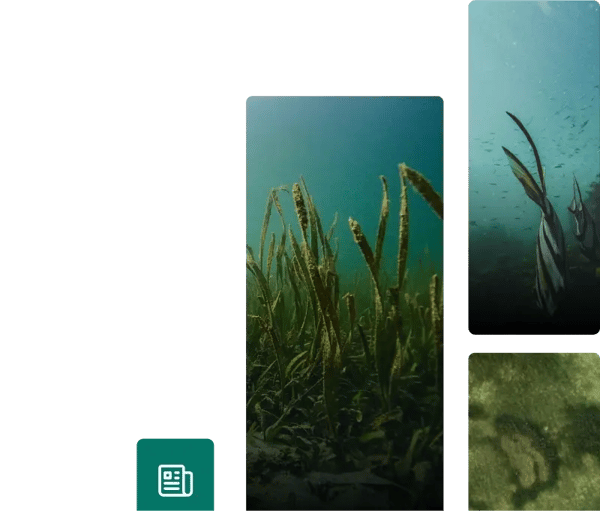What is the Climate Action Reserve’s (CAR’s) Mexico Forest Protocol?
Table of Contents
1. Carbon Markets & CAR-Mexico Protocol
2. History of CAR-Mexico Protocol
3. What makes the CAR-Mexico Protocol distinctly unique?
4. How does the CAR-Mexico protocol ensure that credits represent real emission reductions?
5. What are the carbon pools included in the CAR-Mexico Protocol?
Forest climate change mitigation activities generally fall into three broad categories: conserving existing forests; increasing forest cover; and changing the management of existing forests. The last category, Improved Forest Management (IFM) projects, transforms forests into more sustainable, resilient ecosystems that increase carbon in soil and forest products.
IFM projects include a range of practices that boost carbon stocks, support larger and older trees, maintain high growth rates, and yield more wood products over time. They include practices, such as extending rotations to retain the best-growing trees, reduced-impact logging to avoid damage to trees at harvest, and sylvicultural techniques and enrichment planting to boost forest growth. Read more about IFM practices here: Improved Forest Management and Sustainable Development Goals.
Carbon Markets & CAR-Mexico Protocol
Unlike most types of projects that involve a single action in time, such as building a landfill gas capture system, IFM projects involve a change in practice over the project lifetime. Carbon markets provide capital needed to move forest management in this direction since such management changes are lengthy and present an opportunity cost to the landowner.
Carbon credits encourage a shift towards maximizing the sequestration capacity of trees before harvesting. That is why, for instance, longer rotation lengths are usually undertaken, since it means leaving the best trees to grow up until they reach their maximum biological growth, to derive maximum value. This transition balances the trade-off between immediate economic gains from timber sales and long-term, sustained economic gains from ecosystem services, such as carbon sequestration, water provision, soil protection, better habitat conditions for biodiversity conservation and cultural value.
Participating in IFM projects necessitates robust frameworks to ensure proper implementation of practices. Standards establish protocols defining eligibility criteria and methods for monitoring and calculating the carbon impacts of different activities. The Climate Action Reserve’s Mexico Forest Protocol Version 3.0 (CAR-Mexico protocol) is widely recognized as one of the most robust IFM protocols in the Voluntary Carbon Market (VCM). Understanding its history, development, and strengths highlights why it is a leading model for achieving high-integrity carbon credits. Read our article for more information on The Importance of Improved Forest Management (IFM) Projects in the Voluntary Carbon Market.
History of CAR-Mexico Protocol
The Climate Action Reserve (CAR) has a strong, deep history of promoting sustainable forest management. Its mission is to develop, and support innovative, credible market-based solutions that benefit economies, ecosystems and society.
Headquartered in Los Angeles, the Reserve began as the California Climate Action Registry, which was created by the State of California in 2001 to recognize early efforts of calculation and reporting of emissions. The California Registry helped over 415 leading California-based corporations, government agencies and municipalities to voluntarily calculate and publicly report their GHG emissions. Its established expertise in emissions accounting translated into expertise in emissions reductions accounting for the North American carbon market. After the Global Warming Solutions Act passed in 2006, the Reserve shifted its focus to establishing a North American carbon credit program, developing and updating voluntary carbon protocols.

Its first forest protocol was the U.S. Forest Protocol released in 2005.
In light of the global incentive to include diverse geographic regions in climate initiatives, CAR extended its successful U.S. protocols into Mexico. In 2008, CAR signed a Memorandum of Understanding (MoU) with Mexico’s six border states (Baja California, Chihuahua, Coahuila, Nuevo León, Sonora, and Tamaulipas) and California to develop quantification and verification protocols for reduction projects.
In 2013, the Mexico Forest Protocol version 1.0 was published and refined through multiple iterations until the first pilot project was listed in 2017 under version 1.4 in Oaxaca.
In 2021, CAR launched the latest version of the protocol, version 3.0, undergoing major changes in social and environmental safeguards, as well as permanence, forest inventory and even considerations for mangroves.
At the time of this writing (August 2024), there are 162 registered CAR Mexico Forest Protocol projects. This represents a 58.8% increase from last year (August 2023), demonstrating the increasing adoption of the protocol.
CAR develops its protocols with lengthy input from stakeholders across different sectors and interests, so developing a protocol tailored to Mexico’s unique ecological, social, economic, and legal conditions required years of collaboration with Mexican government agencies, forestry experts, NGOs, and local communities. To raise awareness and encourage participation among Mexican forest owners and managers, the Reserve’s Mexico Team trained over 345 community members, forest technicians, project developers, academics, civil servants, verifiers, and technical experts from more than 8 communities across 5 Mexican states, and in Los Angeles.
This initiative marked a significant step in extending carbon market efforts to diverse regions in Mexico, leveraging local knowledge and conditions to create effective and sustainable climate solutions.
What makes the CAR-Mexico Protocol distinctly unique?
Context-specific design.
One of the defining features of the CAR-Mexico protocol is its context-specific design. Unlike other protocols that apply a one-size-fits-all approach, this protocol takes into account the distinct forest types, climate conditions, land-use practices and even social and economic conditions unique to Mexico. This ensures that the methodologies and guidelines are not only relevant and suitable, but also highly effective in achieving sustainable forest management and durable carbon sequestration.
Forest structure and composition (and thus aboveground biomass) can be highly variable. The CAR-Mexico protocol provides project developers with a field inventory design that is adapted to local conditions to efficiently conduct monitoring, reporting, and verification.
Community-based approach.
Projects should be located in Mexico and land tenure should be either communal, private or public. The protocol places a strong emphasis on involving local communities and indigenous peoples, recognizing their invaluable traditional knowledge and land management practices. By integrating these stakeholders, the protocol promotes projects that are socially equitable and culturally appropriate, fostering greater acceptance and long-term sustainability.
Social and environmental safeguards
Beyond carbon sequestration, the CAR-Mexico protocol underscores the importance of social and environmental safeguards to maximize co-benefits and the provision of ecosystem services.
Under the protocol, project developers must comply with a framework of governance that ensures a consensual and transparent process for community understanding and participation in project activities, including the costs and benefits as well as credit sales and use of funds generated.
The protocol requires that native species are maintained and/or increased over the project life. Non-activity areas within the communities are monitored to ensure against leakage within the community, assuring ecosystems are maintained.

How does the CAR-Mexico protocol ensure that credits represent real emission reductions?
Defining the methods for monitoring and calculating carbon stocks, fluxes, and process emissions accurately and conservatively in forests is complex and technical. It is critical that forest protocols reflect current science and conservatively account for uncertainties. Setting the quality is determined by rules around additionality, baseline, leakage and permanence:
- Additionality: Would the project activities have occurred without the credit income?
- Baselines: What would have happened in the absence of the project?
- Leakage: Does the project cause increased emissions outside of project boundaries?
- Permanence: Is the risk that stored carbon will be released back into the atmosphere managed and accounted for?
- Carbon Accounting: Are the methods for monitoring and calculating carbon stocks, fluxes, and process emissions accurate and conservative?
Additionality
A project is considered additional if it would not have been implemented without carbon finance. Under the CAR-Mexico protocol, projects must satisfy different tests, such as the legal requirement test which mandates that emission reductions must be above what would result from compliance with any legal regulation, and an attestation of voluntary implementation. Projects undergo a performance standard test, which involves an analysis of the drivers of deforestation and degradation.
The risk of cover loss and conversion of forest cover is analyzed through the presence of agricultural activities, biophysical characteristics, urban development, and economic pressures affecting land management decisions. If a project demonstrates sufficient risk of deforestation, then it passes the performance test. However, if it does not, then they must demonstrate a presence of degradation through the use of remotely sensed data. Project areas must have a canopy cover below the default value established according to the ecoregion where the project area is located.
Baseline
CAR-Mexico's protocol mandates the use of initial carbon stocks as the baseline for measuring project impacts. This approach reduces the risk of over-crediting, which occurs when project developers set artificially low baselines to maximize their credited carbon savings. By using initial stocks, CAR ensures that the credits generated represent genuine improvements in forest management rather than manipulations of baseline scenarios. All the carbon issues are just what the forest can sequester as it grows - it’s a static baseline.

Project Scenario: Improved Forest Management activities include growing older forests, stocking improvement, retaining the best-growing trees, avoiding damage to retained trees at harvest, etc.
Standardized Baseline: A representation of business-as-usual for the project, which is based on an analysis of legally binding and financially feasible criteria, which is a statistic of average carbon stocking within a given forest community (common practice) and is conservatively defined to avoid over-crediting.
Potential Baseline Scenarios: There are different possible outcomes for a given project area, most of which are based on management focused on short-term economic returns. This may occur through short rotations, harvesting the best-growing and most valuable trees, and leaving only slow-growing or poorly formed trees, or even conversion to other land use.
Carbon accounting
Carbon accounting includes a variety of measurement and estimation techniques that attempt to accurately quantify carbon stocks in biomass (both aboveground and belowground), soil carbon stocks, and harvested wood products.
What are the carbon pools included in the CAR-Mexico Protocol?
- Aboveground tree biomass
- Belowground biomass
- Standing dead carbon
Aboveground biomass
The CAR-Mexico protocol provides appropriately rigorous, high-level guidance on inventory design under a stock change approach that aligns with recommendations from the IPCC. To measure aboveground biomass, the CAR-Mexico protocol uses a “stock change” approach, which includes plot-based inventories with extrapolation to the project area, field measurement of trees, and use of allometric equations (which describe non-linear relationships between a tree’s biomass and its more easily measured parameters, such as its height and/or diameter).

Belowground biomass
Belowground biomass refers to living roots, which comprise a significant amount of biomass in a forest. Because empirical measurement of belowground biomass is difficult and time-consuming (requiring excavating, cleaning, sorting and weighing roots), belowground biomass is estimated indirectly based on aboveground biomass measurements.
Standing dead carbon
The CAR-Mexico protocol includes the carbon stocked in dead but standing trees under the assumption that project activities may significantly increase standing dead carbon stocks over time.
Harvested wood products
The CAR-Mexico protocol is the only standard that does not account the carbon in harvested wood products. This is due to several assumptions, including that projects are not expected to significantly alter the production of wood products and that there is a lack of creditable data supporting long-term sequestration of harvested wood products.
Leakage
Leakage in forest carbon projects typically falls into two categories:
- Activity Leakage: When production activities (labor and capital) are no longer needed in the project area and are reallocated to similar activities in another location due to the project's implementation.
- Market Leakage: When changes in harvesting inside the project area affect timber prices and/or changes harvesting outside the project area by affecting the value of timber land relative to other land uses (providing incentives for land conversion).
There is no broad agreement on how standards incorporate leakage into their IFM protocols and they differ in the leakage rate applied, and the timing.
Leakage rate
In the CAR-Mexico protocol, leakage is deducted at a constant rate of 20%. This means that for every tonne of carbon sequestered by reducing timber harvesting, 20% is deducted to account for potential leakage. This approach is more straightforward compared to the varying rates used by some other protocols, (like ACR’s tiered leakage deduction system) ensuring consistency and simplicity in implementation.
Timing
Getting the timing for when leakage is accounted for is very important as it can have large effects on the number of credits issued. Some protocols deduct a small portion of the leakage each year over an extended period, under the assumption that the project is preventing significant timber harvesting at the start of the project. This means projects receive a large number of credits at the beginning.
Over time, the initial “over-crediting” is corrected, but this process can take many years, during which the credits might already have been sold or used, misleading stakeholders about the project's true environmental impact and reducing the overall integrity of the market. The CAR-Mexico protocol avoids these issues by timing the leakage deductions immediately, rather than spreading them out over many years. This ensures that the credits issued more accurately reflect the net carbon benefit at the time they are generated, avoiding the risk of over-crediting in the early stages of the project.
Permanence.
Forest carbon stocks are continually at risk of degradation or conversion, particularly given the frequency of timber market fluctuations and land transactions, which are largely motivated by timber and alternative land use value. To counteract this risk, the CAR-Mexico protocol adopts a 100-year approach to monitoring, reporting, and verification to guarantee carbon sequestration in the long-term. This is in line with scientific understanding that carbon dioxide stays in the atmosphere at least 100 years, necessitating an equivalent period of sequestration to effectively mitigate climate change.
Under the protocol, project developers decide on the length of time they commit to maintaining credited carbon stocks, ranging from 30 to 100 years. A chosen term of 100 years earns full credits without discounting. Any shorter commitment earns a fraction of the total credits. This is referred to as Tonne/Year accounting to ensure permanence such that for instance, a 30-year commitment earns 30% of the calculated carbon benefits. This percentage can incrementally increase as the project continues to sequester carbon. This structure incentivizes long-term results with bigger, older, and more resilient forests, many with enhanced productivity through sustained participation.

Both approaches reduce the non-permanence risk associated with nature-based projects, making making the protocol one of the most conservative and robust in terms of permanence. By requiring either a buffer pool contribution or limiting the issuance of credits until later years, CAR ensures that the credits generated represent real, durable carbon sequestration.
The protocol also distinguishes between unavoidable and avoidable carbon reversals. Unavoidable reversals, such as those caused by natural disturbances, are compensated through the shared buffer pool to which all projects contribute. Avoidable reversals, resulting from actions like harvesting or development, must be directly compensated by the forest owner, ensuring accountability and continuous carbon storage. Permanence is guaranteed through the signing of a Project Implementation Agreement (PIA) which is a contract between CAR and the forest owner.
For success stories, read our blog: Community-Based Forest Management: Success Stories.
Conclusion
By integrating context-specific design, rigorous safeguards, and robust forest carbon accounting that conservatively account for uncertainties, the CAR-Mexico protocol sets a high standard for generating high-integrity carbon credits that deliver substantial environmental and social co-benefits.
For businesses committed to sustainability and seeking to make a tangible impact, investing in carbon credits from IFM projects under the CAR-Mexico protocol is an important alternative mitigation option to high-cost and hard-to-abate sources of emissions.
At ClimateSeed, we are dedicated to channelling critical funding towards high-quality projects. If you are interested in learning more about our projects, contact one of our experts here.
If you're interested in contributing to any of these projects or learning more, feel free to contact us. By purchasing the carbon credits produced by these projects, you're supporting the execution of restoration and conservation efforts while also enhancing the livelihoods of communities.
Common Q&As
Improved Forest Management (IFM) refers to a suite of practices aimed at enhancing the carbon sequestration and storage capacity of existing forests through sustainable management techniques. The goal is to increase the amount of carbon these forests can store, reduce greenhouse gas emissions, and maintain or enhance other ecosystem services.
For more information, read our article: The Importance of Improved Forest Management (IFM) Projects in the Voluntary Carbon Market.
Forests are indispensable in the fight against climate change, serving as significant carbon sinks and reservoirs of biodiversity. However, climate change is increasingly threatening these vital ecosystems.
For more information refer to our article:
Climate Change and its Impact on Forests & Protecting Biodiversity through Effective Forest Management.
ClimateSeed focuses its efforts to promote community-based projects that have strong social and environmental impacts as well as direct community involvement. Two projects have been assessed to showcase the community's involvement in the project and its success.
For more information, read our article: Community-Based Forest Management: Success Stories.
Share this
You May Also Like
These Related Stories

Improved Forest Management & the Sustainable Development Goals

Climate Change and its Impact on Forests & Protecting Biodiversity through Effective Forest Management


